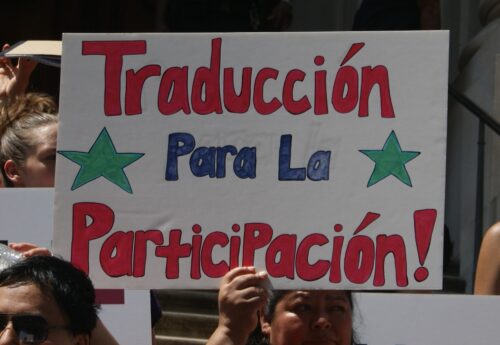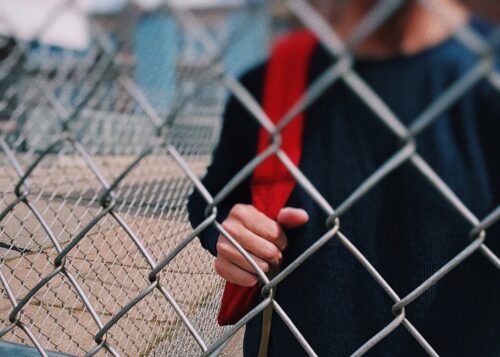
This 2005 article, written by AFC Deputy Director Elisa Hyman and published in the Clearinghouse REVIEW Journal of Poverty Law and Policy, describes the efforts undertaken by AFC to address the push-out problem in New York City.

AFC travay pou chanje politik edikasyon pou sistèm lekòl piblik la sèvi tout timoun yo efektivman. Nou pibliye rapò politik ak analiz done, temwaye nan vil la ak nivo Eta a, pale nan laprès pou pote atansyon sou defi elèv yo ak fanmi nou sèvi yo ap fè fas a, epi mete ansanm ak lòt defansè, paran, jèn, ak edikatè pou mande chanje.

102 Results Found

This 2005 article, written by AFC Deputy Director Elisa Hyman and published in the Clearinghouse REVIEW Journal of Poverty Law and Policy, describes the efforts undertaken by AFC to address the push-out problem in New York City.

This 2005 article, published in the Clearinghouse REVIEW Journal of Poverty Law and Policy and written by AFC Executive Director Jill Chaifetz and Program Associate Rachel Kravitz, describes research that demonstrates why retention policies are damaging to students and presents methods for advocating against retention.

Papye sa a analize 25 ane rechèch ki dokimante echèk politik retansyon yon sèl tès, gade an patikilye pwofondè politik retansyon echèk sot pase Vil Nouyòk ak done aktyèl yo sou politik retansyon Chicago. Papye a te akonpaye pa yon lèt enskripsyon an opozisyon ak politik Majistra a te anonse pou kenbe elèv senkyèm ane yo sou baz sèlman nan nòt yo nan egzamen ofisyèl yo.

Rapò 2004 sa a pa AFC ak la Kowalisyon Imigrasyon New York egzamine wòl Koòdonatè Paran yo ak kapasite yo pou yo sèvi bezwen paran yo ki konpetan limite angle (LEP).

During the 2001-02 school year, AFC piloted a project called the Domestic Violence Education Advocacy Project (DVEAP) that provided individual school-related advocacy for children who had been exposed to domestic violence or abuse and who were having significant problems in school. These children were unable to perform up to their academic potential as a result of suffering from undetected and untreated trauma-related illnesses. AFC found that the public school system, in particular the special education system, bears the brunt of this problem.

This report assesses the manner in which special education services are delivered to children in NYC who have been diagnosed with Autism Spectrum Disorders, with a particular focus on the delivery of services to poor children and children of color.

Rapò sa a, yon piblikasyon konjwen AFC, Pwojè Dwa Sivil nan Inivèsite Harvard, Enstiti Iben ak Enstiti Sosyete Sivil la, mete aksan sou bezwen ijan pou adrese kriz gwoup minorite k ap vini yo ki pa gradye nan lekòl segondè a yon pousantaj boulvèsan.

Rapò 2004 sa a pa AFC ak la Kowalisyon Imigrasyon New York abòde mank de aksè siyifikatif yo bay paran ki gen konpetans limite angle nan lekòl pitit yo ak sistèm lekòl la akòz diferans lang.

This report examines the results of surveys that were conducted to assess the implementation and effectiveness of Supplemental Education Services (SES). These tutoring and remediation services were provided for the first time in 2002-03 to over 240,000 eligible children in schools “in need of improvement.” The results of the surveys show major problems with implementation of SES in New York City, especially for students with disabilities and those classified as English Language Learners.

This report by the Office of Public Advocate Betsy Gotbaum and Advocates for Children of New York examines data documenting students in New York City who have been designated as “discharged” from the school system, an indicator that has received little public attention. Anecdotal evidence suggests that many of these discharges may have been forced “push-outs” of students who have a legal right to remain in public schools.